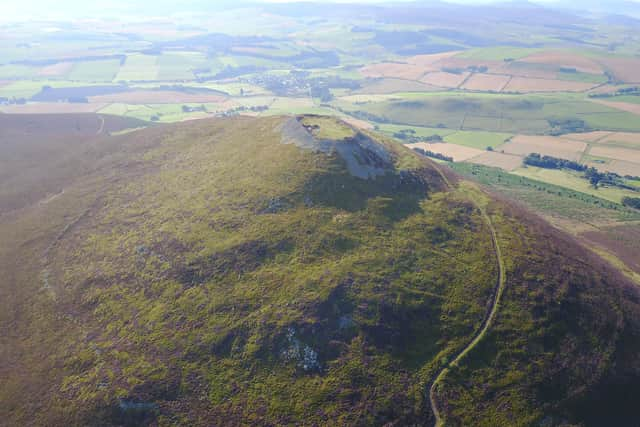Picts boozed on wine at huge hill settlement which may have been a festival site
Sherds of Roman amphora have been discovered at Tap O’ Noth in Aberdeenshire, which archaeologists earlier discovered was a Pictish-era settlement where at least 800 huts housed around 4,000 people.
It is the first time the material has been found in Pictland, which spanned north and east Scotland from around the 3rd century.
Advertisement
Hide AdAdvertisement
Hide AdProfessor Gordon Noble head of archaeology at Aberdeen University who has led the Northern Picts programme, returned to Tap O’ Noth last week.


He said: “We found sherds of amphora from the late Roman period, from the late 5th to early 6th century, which were usually for storing oil or wine. I can imagine the wine being more attractive to the Picts.
"It is really unusual material from this time period that has been found at a few dozen sites, including Tintagel in western England and a number of Royal sites in Ireland. This stuff is getting into the royal centres of very early kingdoms and it’s the only time the material has been found in Pictland. It’s very unusual for it to be found so high up.”
Prof Noble said the wine pottery indicated “long distance connections” being developed between the “Byzantine and Barbarian kingdoms emerging in Western and Northern Europe at the time.”
Investigations continue to establish if Tap O’ Noth was home to temporary, seasonal settlement, such as those that formed for a festival, or a permanent place of residence that sat close to a probable Pictish power centre at nearby Rhynie.
Excavations earlier this month examined remains of two sites on the hillside settlement, which spanned around 17 acres and was enclosed by a rampart.
Platforms are believed to have been dug into the slope to make space for roundhouses. On one of these platforms, a central hearth was found.
He said: “We know from other sites in Britain and Ireland that there were giant assembly sites, where people gathered for events such as harvest festivals, they gathered for big ceremonies, they gathered to give tribute to their king and leaders and they might well get things in return.
Advertisement
Hide AdAdvertisement
Hide Ad"Metalwork might have been circulated or there may have been an exchange of goods. We know from sites in Anglo Saxon England, for example, there may have been horse racing and games or perhaps something more functional, such as markets. They may have been launch pads for raids. There are loads of possibilities.”
Prof Noble added: “It is also possible that this is a permanent settlement and that is perhaps my preferred option given the investment in the site and the huge amount of resources, the labour, that would have been required. It seems crazy to do that for perhaps just a couple of weeks, but that is also possible.”
Tap O’ Noth is one of three Pictish-era sites in the Strathbogie Valley with a smaller settlement south of Rhynie a possible ceremonial site. Around 70 sherds of amphora have been found here.
A third site at Cairnmore was also occupied during the period.
A message from the Editor:
Thank you for reading this article. We're more reliant on your support than ever as the shift in consumer habits brought about by Coronavirus impacts our advertisers.
If you haven't already, please consider supporting our trusted, fact-checked journalism by taking out a digital subscription.
Comments
Want to join the conversation? Please or to comment on this article.
